Black berries are common fruits found on a wide range of shrubs, bushes, vines, and trees. Many edible varieties have rich, sweet, or tart flavors and are packed with antioxidants, making them a favorite for fresh eating, jams, wines, and baked goods. With their deep purple to jet-black skins and bold flavors, black berries have long been prized by foragers, gardeners, and cooks alike.
However, not all black berries are safe to eat. Certain species contain toxic compounds that can cause illness or worse, such as deadly nightshade, pokeweed, and some privet berries. Their dark color can be deceiving, so it’s essential to identify them correctly before eating.
Proper identification is crucial for distinguishing between edible black berries and harmful ones. If you are uncertain about a plant, it is best to leave the fruit untouched to avoid dangerous consequences.
This article provides a comprehensive guide to 22 types of black berries you may encounter in the wild or in cultivated landscapes. We have included quick descriptions and identification tips to help you tell safe, edible varieties apart from toxic look-alikes, ensuring both your enjoyment and your safety.
1. Blackberry
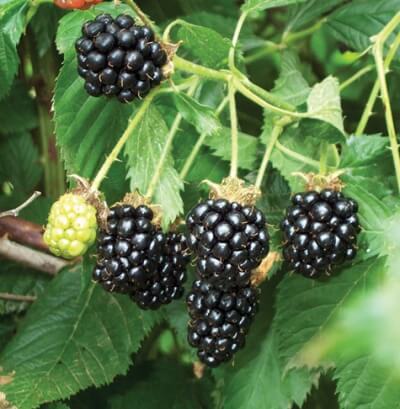
One of the most recognizable wild fruits, blackberries grow in thorny brambles that can form dense thickets. Their glossy, plump drupelets ripen from red to deep black and offer a sweet-tart flavor that intensifies in late summer. Foragers prize them for their versatility — they can be eaten fresh, dried, or turned into jams, pies, and wines. Be prepared for scratches when harvesting; long sleeves are your friend. These brambles often mark the edges of fields and woodland clearings, making them an easy wild snack when you know the terrain.
2. Blackcurrant (Ribes nigrum)
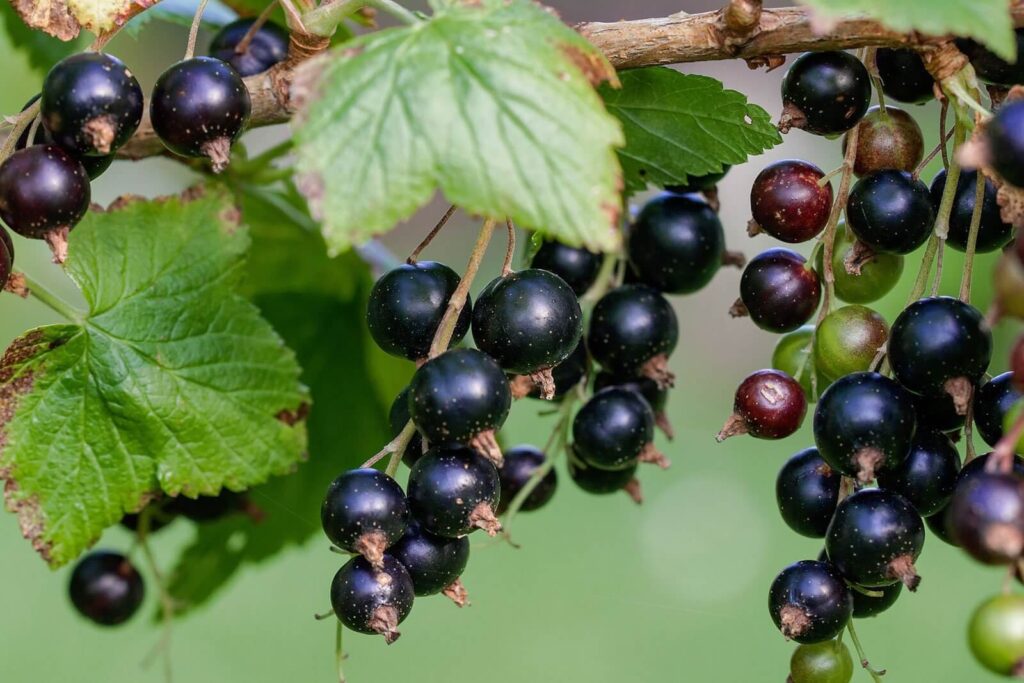
Blackcurrants form in dangling clusters of small, round berries with a deep, almost inky skin. Their aroma is pungent and their taste tangy, sometimes bordering on musky. High in vitamin C and antioxidants, they’re used in cordials, syrups, and preserves, especially in European cuisine. While edible raw, their intense flavor often benefits from sweetening. They thrive in cool climates and can be a rewarding bush to cultivate for both culinary and medicinal purposes.
3. Black Raspberry (Rubus occidentalis)
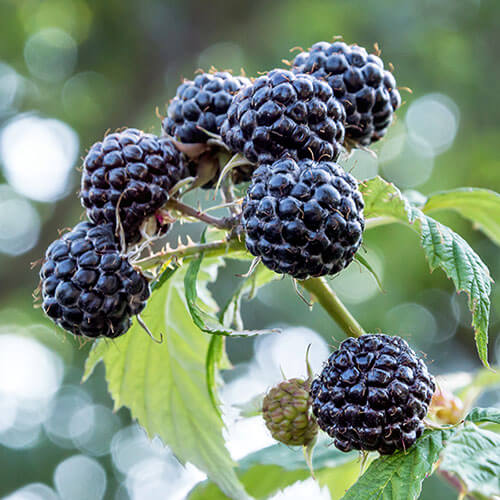
Often confused with blackberries, black raspberries are smaller, with a hollow core when picked — much like their red cousins. Their flavor is sweeter and more complex, with floral undertones that make them excellent for desserts and sauces. Foragers appreciate their shorter harvest window, which can make finding them feel like uncovering hidden treasure. Like blackberries, they grow on canes with thorns, so approach with care.
4. Black Mulberry (Morus nigra)
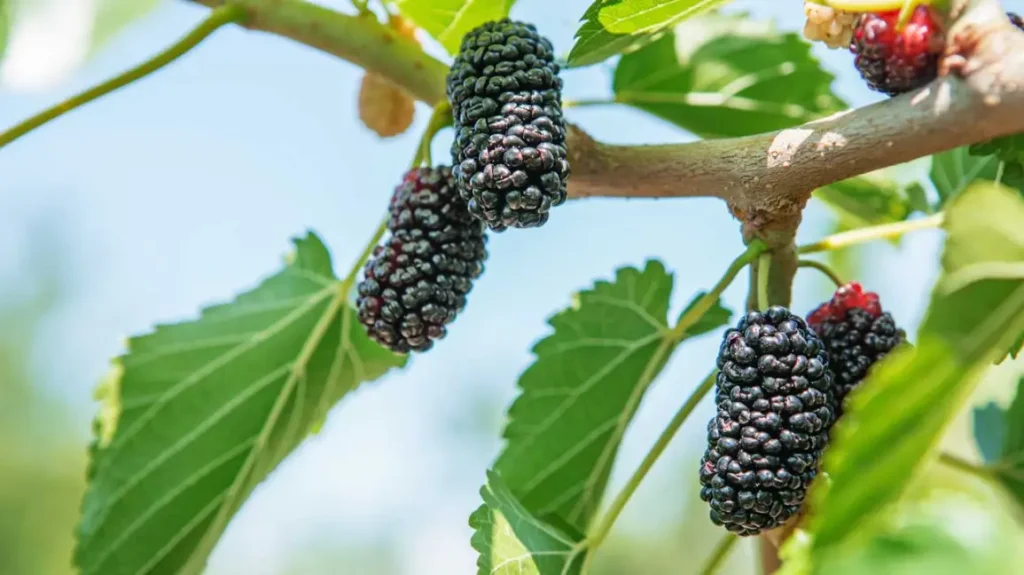
Black mulberries are juicy, elongated berries that stain fingers (and clothes) with their dark red-purple juice. They hang from low-branching trees and can be eaten straight from the branch. The taste is rich and sweet with a wine-like depth, especially when fully ripe. Mulberries can be dried for trail snacks or fermented into unique wines. Their brief peak ripeness means foragers need good timing — and a tarp under the tree can catch falling fruit.
5. Elderberry (Sambucus nigra)
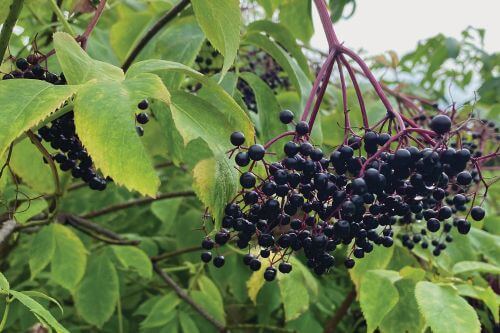
Elderberries grow in large, drooping clusters and are a deep black-purple when ripe. While they’re toxic when raw due to cyanogenic glycosides, cooking neutralizes these compounds, making them safe for syrups, jellies, and medicinal tonics. Known for immune-boosting properties, elderberry preparations have a long history in folk medicine. They grow along roadsides, in hedgerows, and at woodland edges — but remember, these are a cook-first, eat-later berry.
6. Aronia Berry / Black Chokeberry
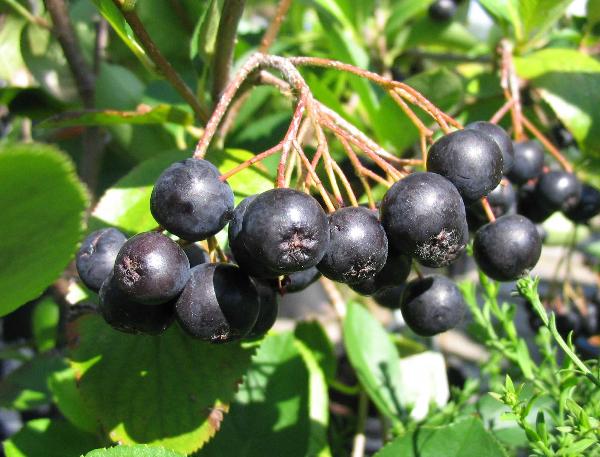
Aronia berries are small, firm, and astringent — the kind that make your mouth pucker. Packed with antioxidants, they’re considered a superfood but are rarely eaten fresh. Instead, they shine in juices, jams, and dried snacks. These hardy shrubs are often grown ornamentally, with bright red foliage in fall, making them easy to spot for the observant forager.
7. Black Huckleberry
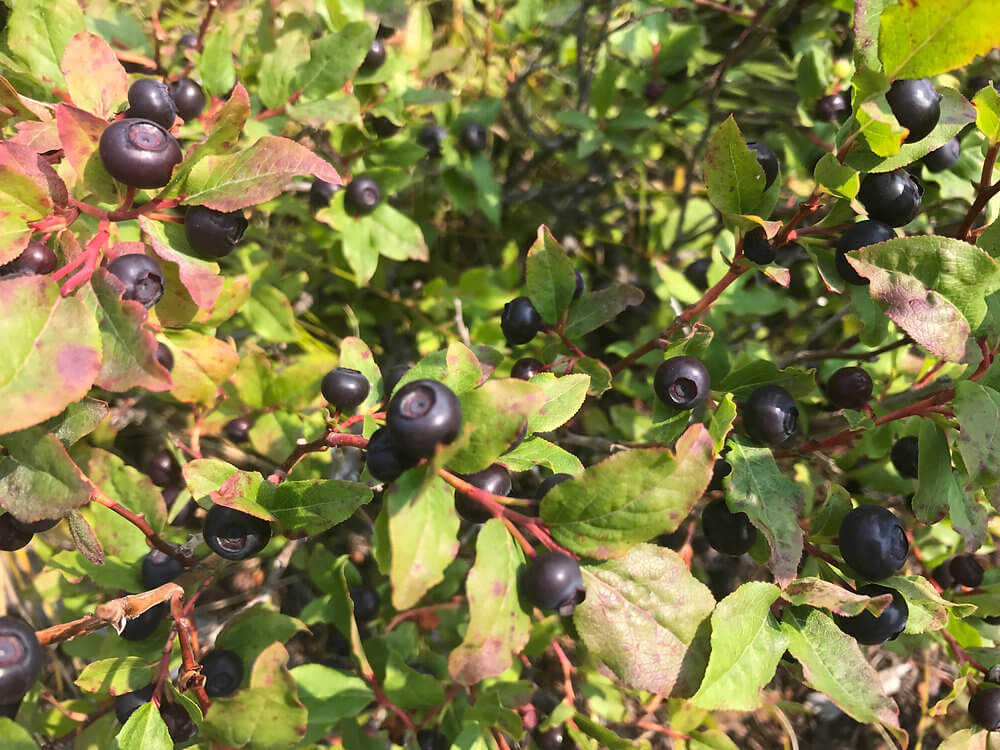
Black huckleberries resemble small blueberries but have a thicker skin and slightly gritty seeds. Their taste ranges from mildly sweet to tangy, depending on the soil and sun exposure. They grow in acidic soils, often in pine barrens or forest understories. Huckleberries are wildlife favorites, so be ready to share your find with birds and bears if you’re in their territory.
8. Black Grape Varieties (e.g., Concord, Black Corinth)

These deep-skinned grapes range from juicy and sweet to richly wine-like, depending on variety and ripeness. Concords are famous for their strong aroma and jelly-friendly flavor, while Black Corinth grapes are tiny and seedless, perfect for raisins. Grapes grow in clusters on vines, and foragers should be sure they’re in safe areas, as some wild grape look-alikes (like moonseed) are toxic.
9. Black Nightshade Berries
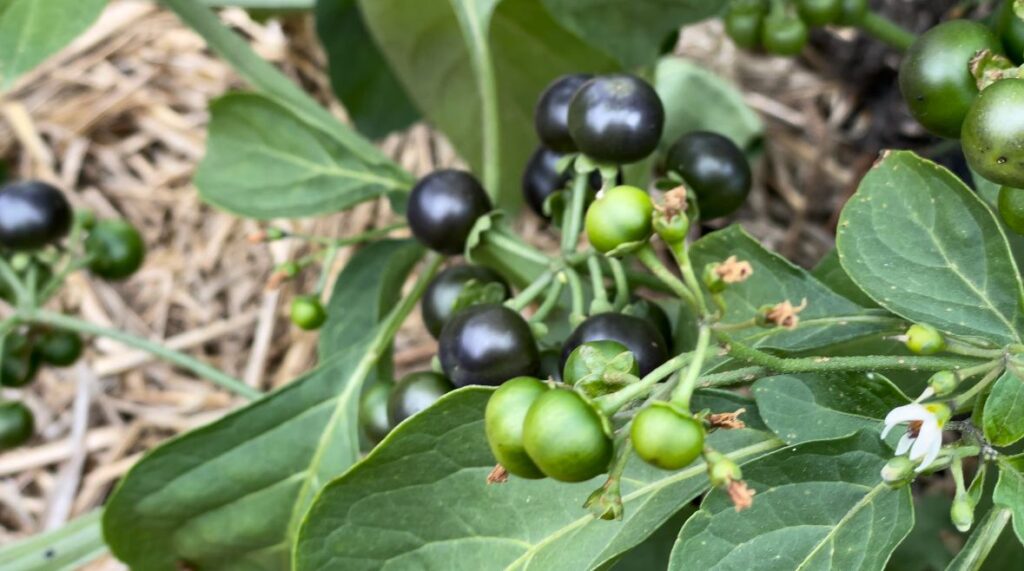
Black nightshade is a tricky plant for foragers: in some regions and species, the ripe black berries are eaten in moderation, while in others they remain toxic even when fully ripe. The berries are small, shiny, and grow in loose clusters on herbaceous plants. The unripe green berries are always poisonous. Extreme caution and accurate species identification are essential before considering consumption.
10. Serviceberry (Amelanchier alnifolia)

Serviceberries, also known as Saskatoon berries, are sweet, almond-flavored fruits that can range from deep purple to nearly black when ripe. They grow on small trees or tall shrubs, often flowering early in spring before producing berries in early summer. High in fiber and antioxidants, they’re delicious fresh or in baked goods. Native to North America, they’re a reliable wild harvest in prairies, woodlands, and along streams.
11. Pokeweed Berry (Phytolacca americana)
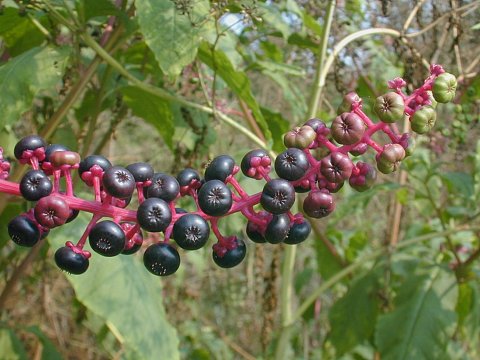
Pokeweed’s glossy black berries grow in striking, drooping clusters on tall red-stemmed plants. While birds feast on them, all parts of the plant — including the berries — are toxic to humans. Symptoms from ingestion can be severe, so these should be admired, not eaten. Pokeweed often grows in disturbed soils, fence lines, and sunny clearings, so foragers will likely encounter it but should give it a wide berth.
12. Privet Berry (Ligustrum species)
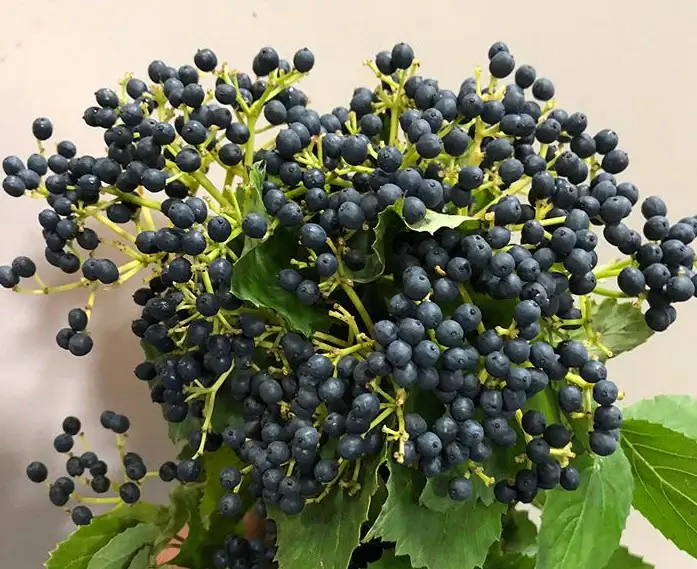
Privet berries are small, round, and glossy black, growing in tight clusters on ornamental shrubs commonly used for hedges. While they may look tempting, all parts of the privet plant, including its berries, are toxic to humans and can cause nausea, abdominal pain, and more severe reactions in large doses. Birds often eat them without harm, but foragers should give these berries a firm pass.
13. Ivy Berry (Hedera helix)

English ivy produces small black berries that ripen in late winter or early spring, providing an important food source for birds when other fruits are scarce. To humans, however, they are poisonous, containing saponins that can cause gastrointestinal distress. Ivy berries grow on climbing vines with iconic lobed leaves, often scaling walls, fences, and trees — easy to spot, but strictly decorative in your wild finds.
14. Black Goji Berry (Lycium ruthenicum)
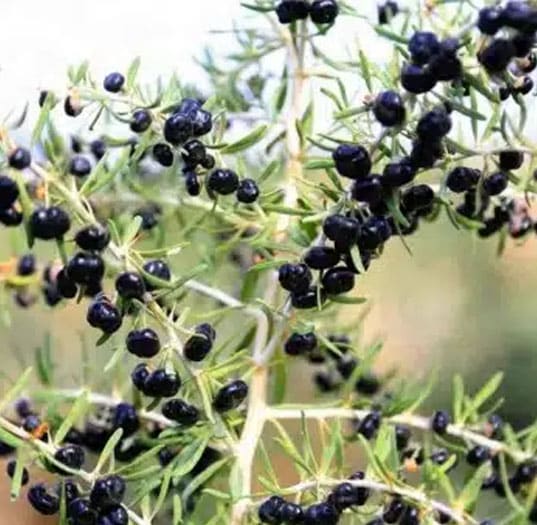
Black goji berries are a rare and nutrient-dense cousin of the more familiar red goji. Native to arid regions of Central Asia, these small, dark berries are prized for their high antioxidant content and unique color-changing properties when steeped in water (turning a vivid purple). They’re usually found dried in markets rather than fresh in the wild, but if cultivated, they offer a sweet-tart, earthy flavor with herbal notes.
15. Salal Berry (Gaultheria shallon)

Salal berries are round, deep purple to black fruits that grow on hardy evergreen shrubs native to the Pacific Northwest. Slightly sweet with a mild earthy taste, they were a staple food for many Indigenous peoples and are still valued by foragers. The plant’s thick, leathery leaves also make it a popular choice in floral arrangements, but it’s the late-summer berries that attract attention on the trail.
16. Black Dogwood Berries

Dogwood species vary greatly — some have edible berries, while others are mildly toxic. Black-fruited varieties often grow on small trees or shrubs and bear clusters of berries in late summer. Because of the variability in edibility, correct identification is crucial before foraging. Many black dogwood berries are mealy and unpalatable even if not harmful, so they’re often more valuable as wildlife food than for human consumption.
17. Açaí Berries (Euterpe oleracea)
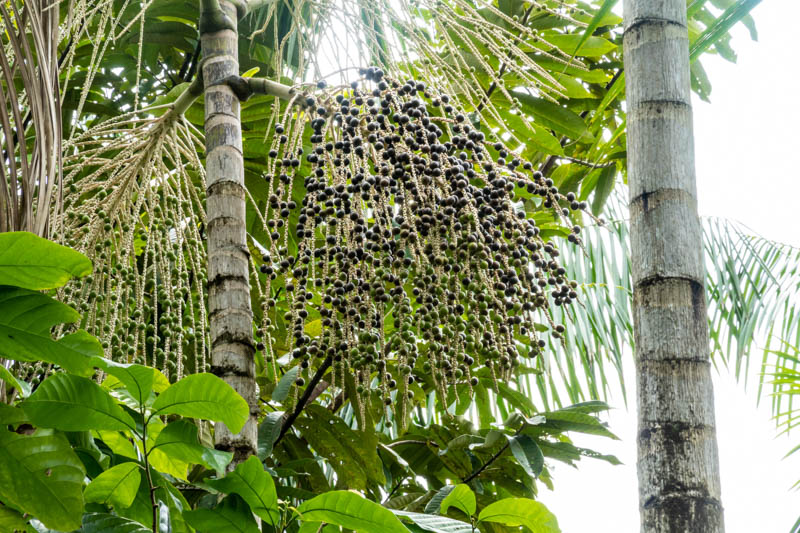
Famous for their “superfood” status, açaí berries grow on tall palm trees in the Amazon rainforest. The small, round fruits have a deep purple-black hue and a thin layer of pulp surrounding a large seed. Fresh açaí is highly perishable, so it’s usually processed into frozen pulp or powders. Rich in antioxidants and healthy fats, açaí is rarely encountered fresh outside its native range but remains a sought-after cultivated crop.
18. Laurel Tree / Sweet Bay Berries (Laurus nobilis)
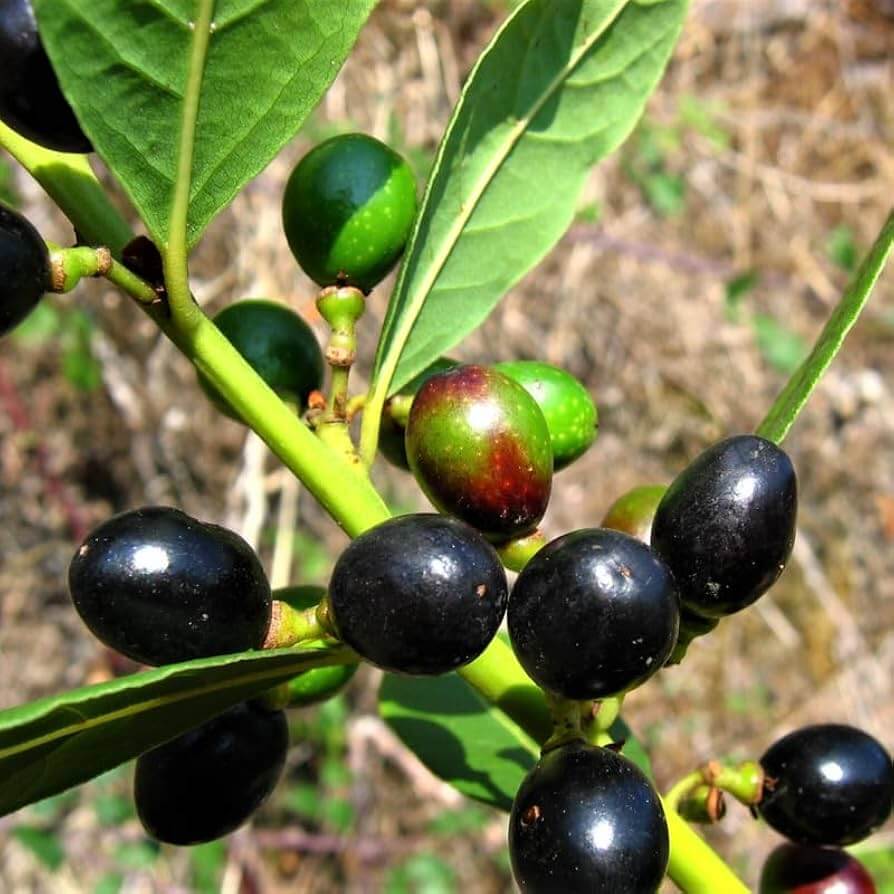
Sweet bay, known for its aromatic leaves used in cooking, produces small black berries in clusters. While the leaves are culinary staples, the berries themselves are toxic to humans and should never be consumed. The glossy fruits persist into winter, offering ornamental appeal rather than edible use.
19. Common Buckthorn (Rhamnus cathartica)
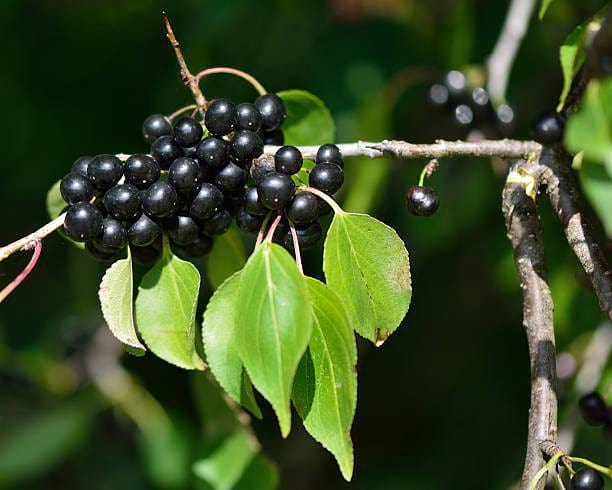
Common buckthorn bears pea-sized black berries in clusters along its stems. While they may resemble edible wild fruits, these berries are toxic and act as a strong laxative. Buckthorn is an invasive shrub in many regions, forming dense thickets that crowd out native plants. Foragers should learn to recognize its thorn-tipped twigs and simple leaves to avoid confusing it with safe species.
20. Maqui Berry (Aristotelia chilensis)
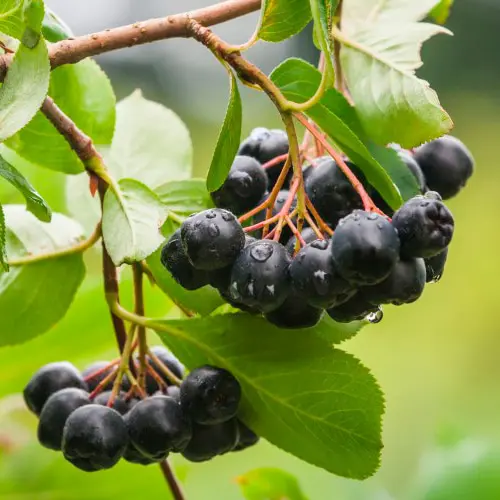
Maqui berries are small, deep purple-black fruits native to Chile and Argentina. With a sweet, slightly tart flavor, they are extremely high in anthocyanins and antioxidants. Traditionally consumed fresh or made into juices and fermented beverages, they are now gaining attention as a health supplement. The shrubs prefer temperate climates and are more likely to be cultivated than found in the wild outside South America.
21. Black Cherry (Prunus serotina)
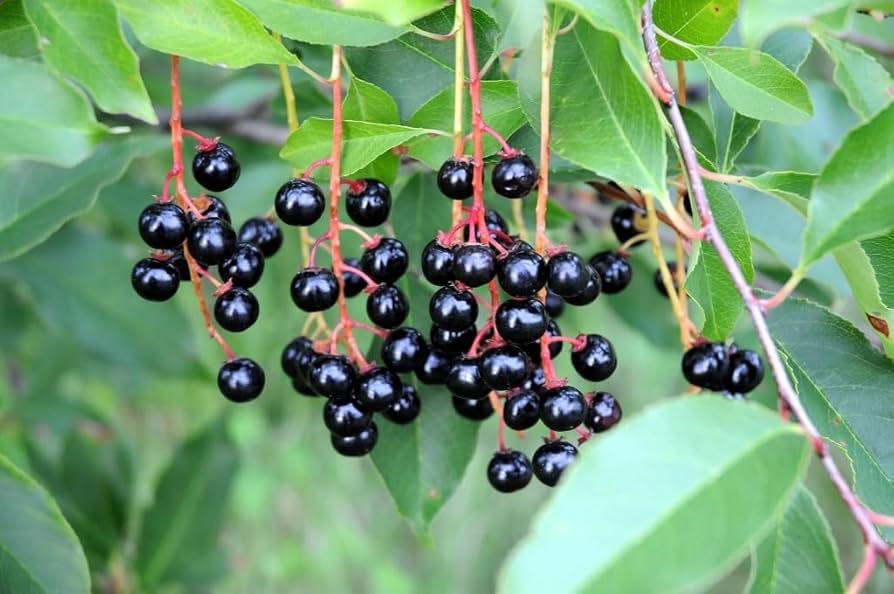
Black cherry trees produce clusters of small, dark berries that ripen from red to black in late summer. The fruits are bitter-sweet and astringent raw but can be used for jams, jellies, and syrups once cooked. The seeds and leaves contain cyanogenic compounds and should not be consumed. Black cherry is a tall native tree in North America, with wood highly valued in furniture making.
22. Camphor Tree Berries (Cinnamomum camphora)
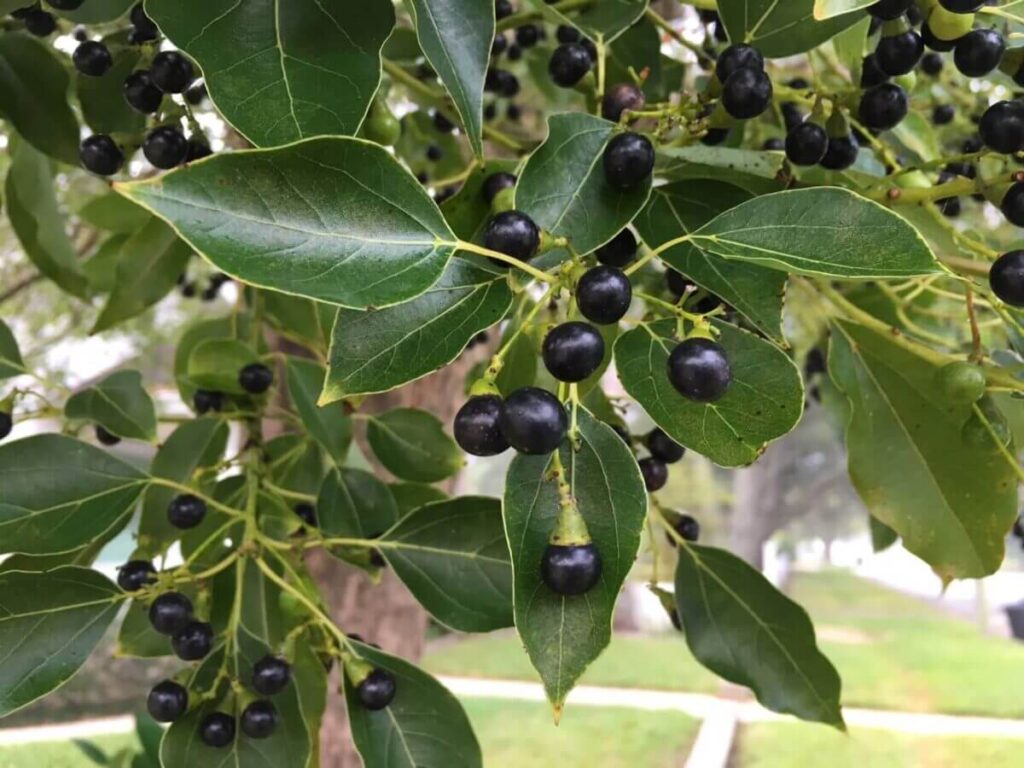
The camphor tree, valued for its aromatic wood and oil, produces small, black, pea-sized berries that ripen in autumn. While birds eat them without harm, the fruits are toxic to humans and should be avoided. The tree’s glossy leaves release a strong camphor scent when crushed, making it easy to identify in warm-temperate regions where it has naturalized.
